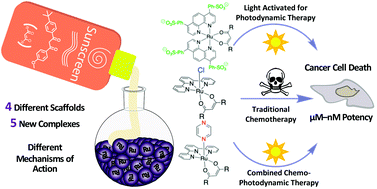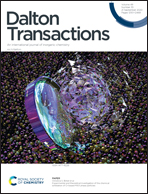Avobenzone incorporation in a diverse range of Ru(ii) scaffolds produces potent potential antineoplastic agents†
Abstract
Four structurally distinct classes of polypyridyl ruthenium complexes containing avobenzone exhibited low micromolar and submicromolar potencies in cancer cells, and were up to 273-fold more active than the parent ligand. Visible light irradiation enhanced the cytotoxicity of some complexes, making them promising candidates for combined chemo-photodynamic therapy.



 Please wait while we load your content...
Please wait while we load your content...